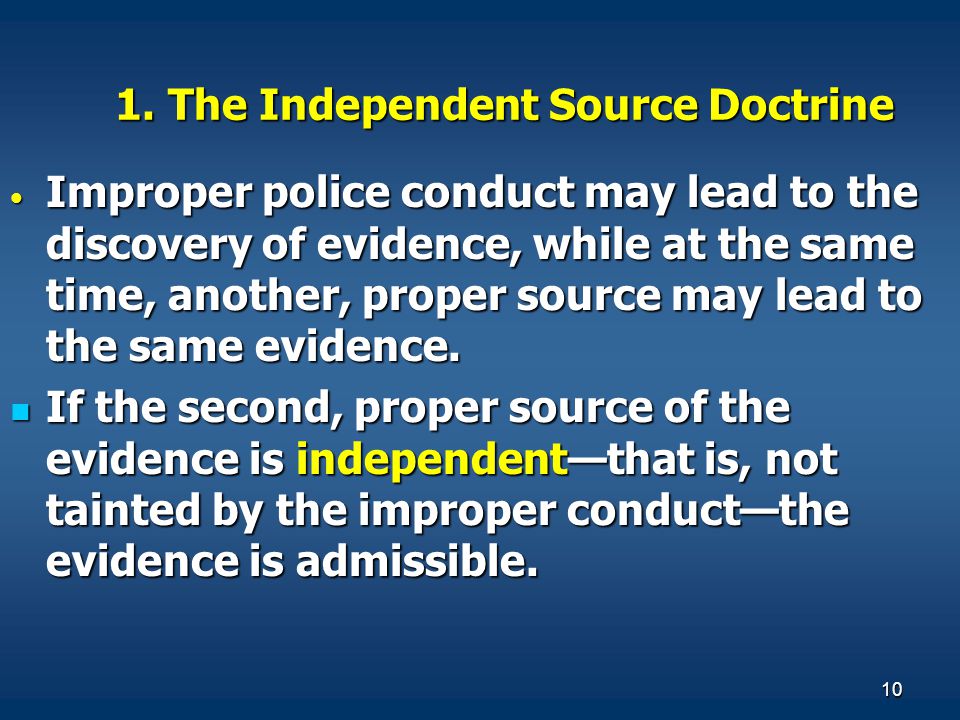
In State v. Tyson, the WA Court of Appeals held the Independent Source Doctrine allows admission of digital evidence seized from a cell phone pursuant to a valid warrant regardless of whether the officer’s initial, warrantless seizure of the physical phone was authorized.
The Independent Source Doctrine
The Independent Source doctrine provides that evidence from an illegal search may be admitted when it can be established that the evidence would have been eventually legally obtained from an independent source. For example, if police obtain evidence during an unlawful search but later obtain the same evidence through a valid search warrant, the evidence can be used in court.
FACTUAL BACKGROUND
Tyson was charged with numerous sex offenses. He moved to suppress all evidence obtained from the search of his cell phone by police. He later expanded his motion to include suppression of all evidence obtained as a result of the search warrants in this case.
With regard to the cell phone, Tyson argued that the deputy’s seizure of the phone pending the issuance of a warrant to search it was unlawful, and that any evidence obtained during the subsequent search of the phone should be suppressed. With respect to the search warrants, Tyson argued that the first warrant was unlawful because it lacked sufficient particularity. Tyson further argued that the evidence obtained as a result of the subsequent warrants should be suppressed as “fruit of the poisonous tree” of the unlawful first warrant.
Following a pre-trial hearing, the trial court denied both of Tyson’s motions to suppress. The trial court ruled that the warrantless seizure of the cell phone was authorized by the exigent circumstances exception, but not by the plain view exception. The trial court further ruled that the warrants were supported by probable cause and sufficiently particular.
The case proceeded to a bench trial. The judge found Tyson guilty on charges.
On appeal, Tyson argued that the trial court erred when it denied his motions to suppress evidence. First, Tyson argued that the warrantless seizure of his cell phone was unconstitutional because no exception to the warrant requirement applies. Next, Tyson argued that the trial court erred by admitting evidence obtained pursuant to the warrants to search Tyson’s cell phone, laptop, and hard drive. Tyson argues that the warrants were unconstitutional because they were not supported by probable cause under the Aguilar/Spinelli test, and the allegations in the warrant were not sufficiently particularized.
COURT’S ANALYSIS & CONCLUSIONS
In short, the WA Court of Appeals held that regardless of whether the warrantless seizure of Tyson’s cell phone was authorized, evidence obtained from the cell phone is admissible under the independent source doctrine because it was seized pursuant to a valid warrant.
“As we conclude above, the photos and evidence on the cell phone were seized pursuant to valid search warrants. Because there had been no search of the phone prior to the warrant application, no information from the phone was used in any of the search warrant affidavits. Therefore, neither the deputy’s decision to seek the warrants nor magistrate’s decision to issue the warrants were influenced by the warrantless seizure of the cell phone. The trial court did not err in denying Tyson’s motion to suppress.” ~WA Court of Appeals
With that, the Court of Appeals denied Tyson’s appeal and upheld Tyson’s convictions.
Please review my Search & Seizure Legal Guide and contact my office if you, a friend or family member are charged with a similar crime. Hiring an effective and competent defense attorney is the first and best step toward justice.















